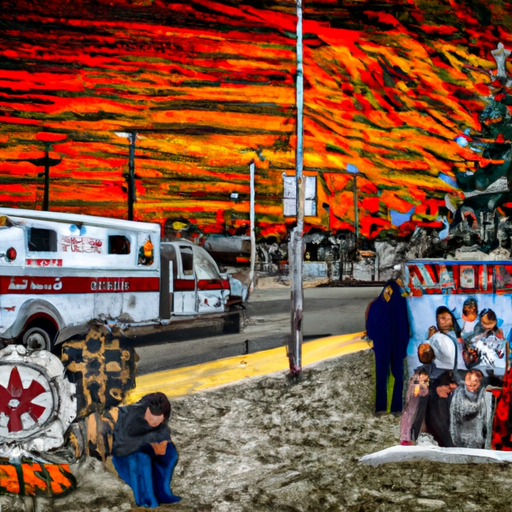Understanding the Profound Effects of the Canadian Opioid Crisis: A Close Examination
In recent times, the opioid crisis has grabbed headlines across Canada, solidifying its place as a critical issue of contention within public health conversations. The Canadian opioid crisis conversation is one that intersects with healthcare, homelessness, crime, and human rights, making it a multidimensional and complex issue to tackle. At the heart of this conversation, lies the city of Barrie, situated in Central Ontario, which like many others, is grappling with the profound, systemic, and unsparing effects of this devastating crisis.
The Opioid Crisis: A Snapshot From Barrie, Ontario
A recent article by CTV News Barrie exposed the troubling levels of potency found in drugs circulating in the city, which has led to a spike in drug-related mortalities. The opioid crisis in Ontario, driven by substances like fentanyl and other potent narcotics, is not only claiming lives and leaving people hospitalized but is also contributing to a rife problem of homelessness and crime.
As the opioid crisis engulfs more people, it highlights the systemic failures within healthcare, social support systems, and the criminal justice system. Undoubtedly, the disproportional impact of this crisis on the homeless population underlines the urgent need for an innovative, comprehensive and empathetic approach that addresses the complex webs of interconnected issues at its core.
Tackling the Opioid Crisis: The Canadian Abatement Class Action
Among the extraordinary efforts being taken to combat the crisis is the Canadian Opioid Abatement Class Action, a class action lawsuit representing opioid users who became addicted and their families. The effort seeks to hold pharmaceutical companies accountable for their contributions to the crisis through aggressive marketing and downplaying the risks associated with opioid use. This legal recourse hopes to harness the means to provide further resources for those grappling with the effects of the crisis.
Key Points from Barrie’s Opioid Crisis
- The opioid crisis in Ontario is marked by an alarming increase in drug-related fatalities due to high-levels of potency.
- Substances like fentanyl continue to be significant contributors to the opioid crisis.
- The crisis disproportionately impacts homeless populations, thereby intersecting with other systematic social issues such as homelessness and crime.
- The Canadian opioid abatement class action holds pharmaceutical companies accountable for their irresponsible marketing strategies and failure to accurately represent the hazards associated with opioid use.
Combating the Opioid Crisis: The Role of Naloxone
An important tool in our arsenal to combat the opioid crisis is Naloxone. Naloxone, a life-saving medication, can rapidly reverse the effects of an opioid overdose. The city, in collaboration with local health authorities and organizations, conducts free naloxone training sessions and distributes naloxone kits. Here, the crucial role of community-based response is underlined as an effective strategy to tackle the crisis, revealing that philanthropic organizations and nonprofits are integral to curbing the crisis.
Concluding Thoughts
As we continue to grapple with the debilitating effects of the opioid crisis, the Canadian healthcare system’s response must address the root causes and systemic failures associated with it. Tackling the opioid crisis calls for an integrated, concerted, and multifaceted approach, including supporting the homeless, addressing crime, offering mental health support, and holding pharmaceutical companies accountable.
This detailed examination of Ontario’s situation underscores how pervasive and destructive the opioid crisis is, but also how channelized collective efforts, whether judicial in the form of the Canadian opioid abatement class action lawsuit, or healthcare-oriented like the distribution of naloxone, can make significant impacts in abating the crisis. May it be remembered: A predicament as grand as the opioid crisis will not cease through isolated actions, but by relentless, coordinated efforts from all societal structures, committed to the protection and betterment of those affected.
